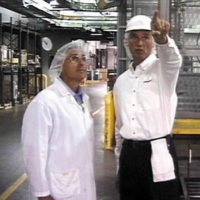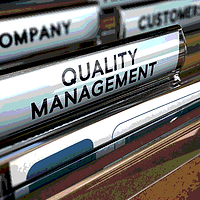Public Health: Back to Basics: Having Each Other’s Backs

“I got you.”
Those were Shannon Johnson’s last words on December 2, 2015, as he shielded a coworker from a barrage of bullets raining down on the San Bernardino, CA, health department Christmas and holiday party. Johnson was sitting next to Donna Peraza at a holiday luncheon for San Bernardino County environmental health employees on December 2, 2015, when a pair of attackers—one of whom was known, and a coworker actually—with assault rifles began spraying bullets. Peraza says she and Johnson sought cover beneath a table when he tried to shield her. Johnson was among 14 people killed in the attack. Peraza was shot in the back but survived. Shannon’s selfless act of ensuring the safety and well-being of a colleague resulted in his death—but there is a lesson to be learned here in his passing: We are relentlessly compassionate, and we all learn from our experiences and life journey. While such events will long be forgotten, the scars and the emotional toll will persist. It is with appreciation to Mr. Johnson and his heroic acts and to remember those in public health who have sacrificed so much for the communities they serve that we wish to share public health lessons learned.
Against this backdrop, we introduce a Back to the Basics column, which will serve as a reminder that sometimes we need to look back to get ahead.
Have you heard the names Carlo Urbani or Li Wenliang before? What about John Snow? What do these public health heroes have in common? They were quick to think beyond what was common knowledge at the time and were willing to challenge the "norms" of what issues they were confronted with. Carlo Urbani was an Italian epidemiologist who was quick to notify the World Health Organization when he first evaluated patient zero in March 2003 of the severe acute respiratory syndrome (SARS) epidemic. He subsequently died of SARS. Li Wenliang was a Chinese ophthalmologist who is known as the "whistle-blower" for the coronavirus disease 2019 (COVID-19) pandemic, who was initially humiliated by the Chinese government, then named a martyr for his heroic actions, ultimately succumbing to the disease after treating a patient who was a shop owner in the Wuhan seafood market. John Snow is known as the "father of epidemiology" for his work in stopping a cholera outbreak in London in 1854 by having the Broad Street water pump handle removed.
Public health professionals don’t drive vehicles with lights and sirens or carry heavy equipment to put out fires or use infrared technology to track down bad actors or have the ability to push a medication in the back of an ambulance to save someone's life in an instant. While the role of public health professionals around the world is much more focused on the preventive aspects of community health and wellness, they too are responders—as in essential personnel that are currently working around the clock to protect our communities from the COVID-19 pandemic. The “back to the basics” elements that we’ve been hearing from the White House Coronavirus Task Force to help reduce the likelihood of transmission and “flatten the curve” are all public health-based nonpharmaceutical interventions like “wear your damn mask” (Maryland Governor Larry Hogan, 11/2020), cover your cough, practice effective handwashing, stay home if you’re sick, etc.
The tools of the public health trade are grounded in activities that will help prevent disease, promote health and wellness, and protect our communities. “Prevent–Promote–Protect” is a slogan that the National Association of County Health Officials developed—in partnership with public health practitioners across the U.S.—as a means to market and raise awareness of what public health professionals do and how they work to serve our communities.
As a reminder, and as we all wait for the “new normal” to take hold, the concept of getting back to the basics is something we look forward to bringing you in future issues, as we explore the impacts that public health practitioners have on a daily basis. Admittedly, a lot of the work the public health community does is invisible, and it has been said that public health is visible only “when something bad has happened.” This very well may be true. But one thing is for sure, public health professionals will be there when needed, and they’ll be ready to do what needs to be done to prevent, promote, and protect the public’s health and well-being.
If you have a contribution for Back to Basics, please send it to barbara@foodsafetymagazine.com.
Jason P. Bashura, M.P.H., RS, is the senior manager, global food defense, at PepsiCo and a PROUD public health professional for 20-plus years. He is a member of the editorial advisory board of Food Safety Magazine.
Barbara VanRenterghem, Ph.D., is the editorial director of Food Safety Magazine.
Looking for a reprint of this article?
From high-res PDFs to custom plaques, order your copy today!









.webp?t=1721343192)